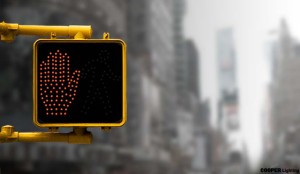“I won’t commit!!!” That’s all I keep hearing in my head and I’m trying to beat it down with a stick. Nothing strikes fear in my bones more than committing to an idea I’ve only had a short time to ponder. This week I’ve spent hours developing a multi-platform story – by developing I mean pulling my hair out while writing in a notebook at countless cafes. I’ve met with my advisor contemplating whether or not to work alone and whether or not to combine my final projects for ICM and P Comp. AND changing my mind endlessly about what direction I am going to head in. Seven weeks isn’t very long. I’m not exactly sure why this is so paralyzing, but it is.
My thought process has been this. I am a storyteller and a filmmaker. Instead of throwing these skills out to do only something with circuitry and coding, I want to incorporate all of my skill sets, new and old. However, I write BIG stories and I want to make sure to have a project that is workable in seven weeks. AND I want to push my newer skill set without killing myself. Whether I partner up or go at this alone, I am determined to build the circuitry, solder and code all or most of it myself. So this project can not be a huge undertaking, but will be a great learning experience.
All of that said, this is my idea so far… In my attempts to follow one of the exercises in Sketching User Experiences by Saul Greenberg and Bill Buxton, I drew a crosswalk sign.
My first thought was wouldn’t it be cute if two crosswalk signs began to speak to each other? I thought there might be something there, but I left it in my sketchbook amongst other ideas. Then a week or so later as I’m approaching my Virtual Reality shoot date, I started to think about directing actors. Basic drama works when you put two characters in a scene. They each have a different objective – basically what they want from the other person. There’s the text which is what they actually say, but most of the real acting and the part that as a director I push for is the subtext. People rarely say exactly what they mean. That’s when something clicked in.
What if two people had light boxes like street signs? They could control which colors to use and how intense the light was, but could not talk. And their boxes did not have the obvious shapes of a crosswalk. The two players’ only communication would be subtext. My first thought was to make the scene a first date. I also know there needs to be rules to this communication, a language of light. This is where the ICM half comes in. I think there should be a screen interface that gives you a scaffolding of the rules. The meaning of each different color choice, using only one color or mixing colors and the intensity of the light. Immediately Close Encounters of the Third Kind came to mind.
My idea was light only, but once you re-watch Spielberg’s work, sound becomes a possibility. I also have thought of using the talking light boxes as a piece in the story I have been developing so the screen could add in a heavy narrative component. Or similar to my fortune teller project, there could be many options of fun scenes to try to have with each other – disconnected from a larger story. You can either choose a scene by chance or pick the one you want to attempt. Maybe both players know the basic scene, but the screen secretly gives each their motivation – like if it’s a first date, one player is told he wants there to be a second one, the other player wants to never see the person again. They both know it’s a date, but not the other player’s objective. After playing the scene with their light boards, the two players can try to guess what the other’s objective was. I am not sure if I would go in this direction, but it might work.
I do think there is something to this idea, but at the moment it is still loose. I feel that as I focus in more on the user experience, the best version of the idea will become clear.


